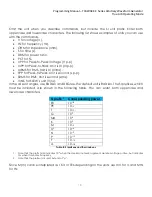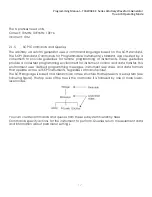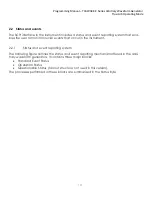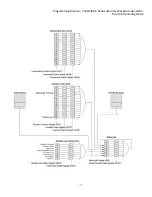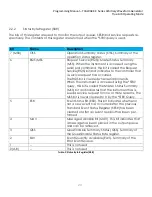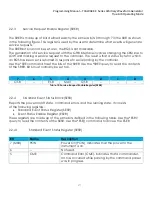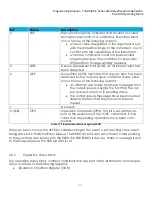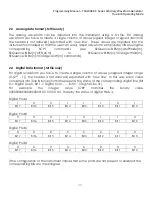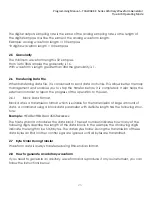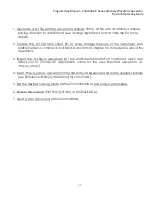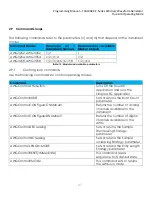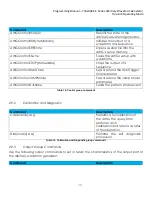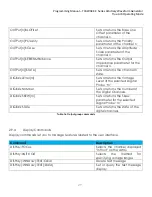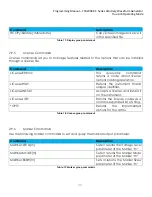
Programming Manual
–
T3AWG3K-C Series Arbitrary Waveform Generator
True-Arb Operating Mode
15
NR3 numeric
Floating point numbers
3.1415E+9
NRf numeric
Flexible decimal numbers that may
be type NR1, NR2, or NR3
See NR1, NR2, and NR3 examples in
this table
String
Alphanumeric characters (must be
within quotation marks)
"Testing 1, 2, 3"
Table 6: Parameter types, their descriptions, and examples
Quoted String
Some commands accept or return data in the form of a quoted string, which is simply a group
of ASCII characters enclosed by a single quote (’) or double quote
(
“
). For example:
“
this is a
quoted string
”
. This documentation represents these arguments as follows:
Symbol
Meaning
<QString > Quoted string of ASCII text
Table 7: String symbol and meaning
A quoted string can include any
character defined in the 7
-bit ASCII character set. Follow
these rules when you use quoted strings:
1.
Use the same type of quote character to open and close the string. For example:
“
this
is a valid string
”
.
2.
You can mix quotation marks within a string as long as you follow the previous rule. For
example,
“this is an ’acceptable’ string”
.
3.
You can include a quote character within a string simply by repeating the quote.
For example:
“
here is a
““
mark
”
.
4.
Strings can have upper or lower case characters.
5.
A carriage return or line feed embedded in a quoted string does not terminate the
string, but is treated as just another character in the string.
6.
The maximum length of a quoted string returned from a query is 1000 characters.
Here are some invalid strings:
•
“
Invalid string argument' (quotes are not of the same type)
•
“
test<EOI>
”
(termination character is embedded in the string)
Units and SI Prefix
If the decimal numeric argument refers to voltage, frequency, impedance, or time, express it
using SI units instead of using the scaled explicit point input value format <NR3>. (SI units are
units that conform to the System International
d’Unites standard.) For example, use the input
format 200 mV or 1.0 MHz instead of 200.0E-3 or 1.0E+6, respectively, to specify voltage or
frequency.
















